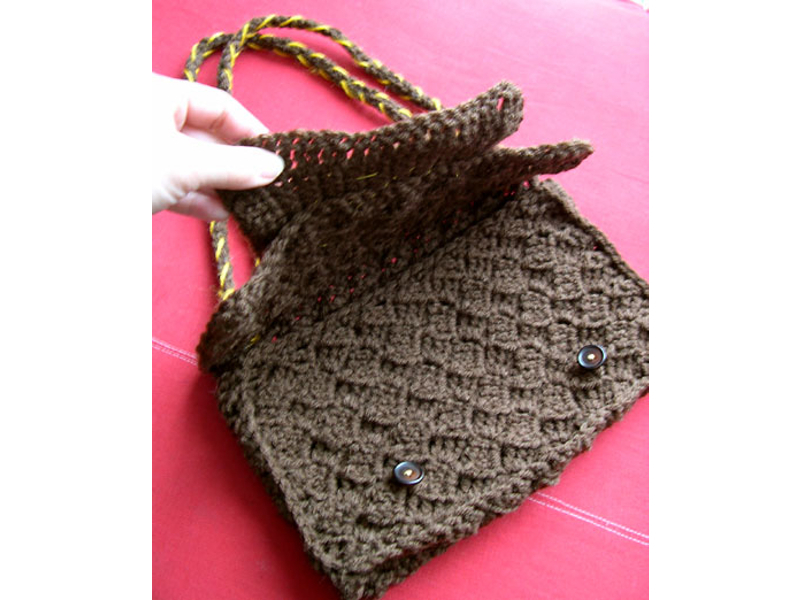I don’t have a formal pattern for this particular handbag, but wanted to share tips on how I made it. So far, I’ve been “freeforming” it on every counterfeit handbag I’ve made, trying to be inventive on how to interpret the textures and parts. I’m hoping that folks try out their own techniques and ideas in making their bags, but it’s also useful to know what others have done, to get your creative juices flowing.
The following instructions assume a basic knowledge of crochet, and a healthy sense of experimentation on the maker’s part. I found it helpful to rummage through a few crochet books to choose from basic stitch patterns, and got inspiration from a few vintage 70s ones as well. There are great online tutorials on how to crochet that will help you build up shapes in no time at all. The body of the bag is made of worsted-weight brown and mustard acrylic yarn that I bought at my local drugstore (1 skein each is more than enough). I really like the chunky look, and it’s faster to work with a thicker yarn. Also, I make no bones about this being a “fancy” purse made out of nice or expensive yarn — for me it’s all about both “debasing” the original and using common materials to interpret the couture.
The purse has a front flap (where the logo is) that buttons down. Four little gold “grommets” (hand crocheted) are at the top corners, and a long handle is run through them to make an adjustable long single strap or 2 shorter double straps, depending on how you like to wear it.












